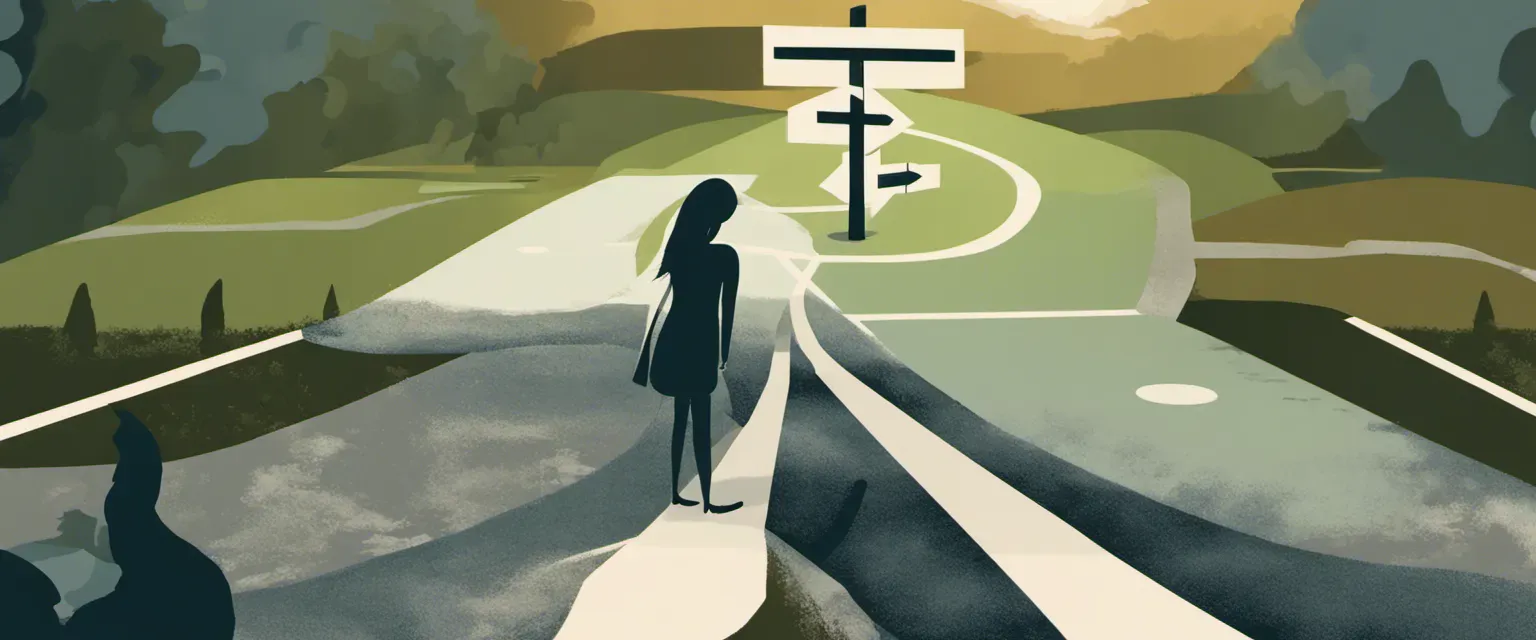——Designing your life by Bill Burnett & Think Again by Adam Grant
In today’s fast-paced and ever-evolving world, navigating through the countless options and decisions that shape our lives has become increasingly challenging. Two recent books have garnered attention and praise for their profound insights into personal growth, adaptation, and designing a fulfilling life: “Designing Your Life” by Bill Burnett and “Think Again” by Adam Grant. These thought-provoking works offer unique perspectives on designing our journeys and challenging our beliefs, prompting us to reconsider the way we approach our careers, relationships, and personal growth.
Designing Your Life” by Bill Burnett takes a practical and hands-on approach to help readers navigate the often-confusing realm of career choices. Burnett, a renowned Stanford University professor, draws upon the principles of design thinking to help individuals craft a meaningful and purposeful life. Central to his philosophy is the idea that one’s life should be treated as a design challenge, and that with the right mindsets and tools, anyone can create a life that brings them joy and fulfillment. Burnett’s book offers a blueprint for constructing a life that aligns with one’s values, passions, and aspirations, emphasizing the importance of experimentation, curiosity, and embracing failure as an opportunity for growth.
On the other hand, Adam Grant’s “Think Again” takes a different approach as it challenges our preconceived notions, beliefs, and ingrained habits of thinking. Grant, a highly regarded psychologist and professor at the Wharton School of the University of Pennsylvania, argues that rethinking is an essential skill to foster intellectual growth, innovation, and adaptability. By encouraging readers to question their assumptions and biases, Grant aims to empower individuals to overcome entrenched views and upgrade their thinking to navigate an increasingly uncertain and complex world. Through compelling anecdotes, rigorous research, and practical strategies, “Think Again” offers a compelling case for embracing intellectual humility, curiosity, and open-mindedness as catalysts for personal and collective growth.
While there are inherent differences in their approaches, both Burnett and Grant share a common goal—enabling readers to break free from conventional thinking patterns and embrace a more intentional and fulfilling life. By undertaking a comparative study of these two impactful books, we can explore the unique themes, methodologies, and insights they offer, gaining a comprehensive perspective on the challenges and opportunities that lie ahead.
Through this study, we will delve into the core concepts presented in “Designing Your Life” and “Think Again,” examining their respective frameworks, strengths, and limitations. By exploring the practical applications, psychological foundations, and philosophical underpinnings of these works, our aim is to provide a comprehensive assessment of their contributions and to offer insights into how readers can apply these ideas to their own lives.
In the following chapters, we will scrutinize the fundamental principles, case studies, and real-life applications of “Designing Your Life” and “Think Again.” By closely examining the concepts presented in these books, we hope to provide readers with a comparative understanding of these influential works, enabling them to gain practical tools to navigate the complexities of modern life and to foster personal growth.
As we venture into this comparative study, let us embark on a journey of introspection, exploration, and transformation, drawing inspiration from Burnett and Grant’s profound insights to craft more fulfilling and purposeful lives.
Brief Summary of Two Books
Designing your life by Bill Burnett
Designing Your Life” by Bill Burnett and Dave Evans is a self-help book that offers a practical framework for designing a fulfilling and meaningful life. The authors, both Stanford professors and experts in design thinking, apply design principles to help readers navigate the complexities of life’s challenges.
The book begins by debunking the notion that life’s purpose or passion must be found and instead suggests that it can be built through a series of intentional choices and actions. The authors introduce the concept of “design thinking” and provide a step-by-step process to apply it in one’s life.
In the first section, the book focuses on awareness, encouraging readers to evaluate their current beliefs, assumptions, and values. It emphasizes the importance of reframing problems and seeing them as opportunities for growth and change. By reframing obstacles, readers can gain fresh perspectives and discover hidden possibilities.
The second section explores the process of ideation, where readers generate a wide range of potential solutions and experiment with different paths. It encourages readers to cultivate a mentality of prototyping and curiosity, enabling them to test various ideas without fear of failure.
The authors then move on to the third section, where readers learn how to make choices and commitments. They provide strategies to evaluate and prioritize options based on personal values, as well as tools to overcome decision paralysis.
The final section focuses on the process of building and iterating. It encourages readers to take action and learn from their experiences. By continuously refining, adapting, and adjusting one’s life design, readers can create a life that aligns with their values and brings them fulfillment.
Throughout the book, Burnett and Evans share personal stories and examples, along with exercises and activities that readers can complete to apply the concepts in their own lives. By combining the principles of design thinking with practical tools, “Designing Your Life” offers readers a transformative toolkit for creating a life they love.
Think Again by Adam Grant
Think Again” by Adam Grant is a thought-provoking book that challenges readers to question their beliefs and embrace the power of rethinking. Grant presents convincing evidence from various fields, including psychology, neuroscience, and business, to support the notion that being open to reconsidering our ideas and opinions is crucial for personal growth and success.
The book encourages readers to overcome the common pitfalls of rigid thinking and group polarization, urging them to adopt a more flexible mindset. Grant emphasizes the importance of intellectual humility, a willingness to admit when we’re wrong and adjust our thinking accordingly. He provides practical strategies for fostering a culture of openness and constructive disagreement, both in personal relationships and organizations.
Through engaging stories and real-life examples, Grant demonstrates how individuals and institutions that embrace the practice of thinking again consistently outperform those who remain steadfast in their convictions. He explores topics like the benefits of regularly seeking out opposing viewpoints, the value of embracing uncertainty, and the dangers of confirmation bias. He also delves into the role of cognitive empathy and effective communication in cultivating an environment where thinking again becomes a collective endeavor.
Ultimately, “Think Again” encourages readers to develop a growth mindset and embrace intellectual curiosity. It advocates for continuous learning, unlearning, and relearning, as well as challenging deeply held assumptions in order to achieve personal and professional success. The book serves as a powerful reminder that true progress often lies in our ability to be open-minded and explore alternative perspectives.
Comparison between Two Books

Similarities in Decision-making
Both “Designing Your Life” by Bill Burnett and “Think Again” by Adam Grant touch upon the topic of decision-making but from different perspectives. Here are some similarities in their approach:
1. Value of exploration: Both books emphasize the importance of exploration and experimentation when it comes to decision-making. They argue that gaining diverse experiences, trying out new paths, and continuously learning from these experiences are crucial for making informed decisions about one’s life and career.
2. Challenging existing assumptions: Both authors encourage readers to question their existing assumptions and beliefs when making important decisions. They emphasize the need to challenge fixed mindsets, biases, and societal norms that might hinder individuals from exploring alternative options or pursuing their true passions.
3. Integration of feedback: Both books highlight the significance of seeking feedback from others in the decision-making process. They advocate for actively seeking out diverse perspectives, gathering feedback, and incorporating it into one’s decision-making framework. By doing so, individuals can gain valuable insights and adapt their choices to align better with their goals and values.
4. Embracing and learning from failure: Both authors acknowledge the role of failure in decision-making and urge readers to embrace it as an opportunity for growth. They believe that failure can provide valuable lessons and insights that can guide individuals towards making better decisions in the future.
5. Iterative approach: Both books advocate for an iterative approach to decision-making. They encourage readers to treat decision-making as an ongoing process, rather than a one-time event. By iterating and refining decisions based on new information and experiences, individuals can adapt and make adjustments to better align with their evolving aspirations and circumstances.
Overall, while “Designing Your Life” focuses more on personal decision-making and life design, and “Think Again” centers on decision-making in the context of cognitive flexibility, both books emphasize the importance of exploration, critical thinking, feedback, and continuous learning in the decision-making process.
Divergences in Decision-making
Designing Your Life by Bill Burnett and Think Again by Adam Grant are both impactful books that offer valuable insights into personal and professional development. While both books explore decision-making, they approach the subject from different angles, resulting in distinct divergences in their perspectives.
In Designing Your Life, Burnett emphasizes the concept of “design thinking” and how it can be applied to decision-making. The book encourages readers to adopt a problem-solving mindset, where they approach decision-making as a creative process rather than as a fixed choice. Burnett introduces the concept of “prototype thinking,” which involves testing different options to gain insights and make informed decisions. This approach encourages readers to embrace a growth mindset, allowing them to view decisions as iterative and adaptable rather than final and binding.
On the other hand, Think Again by Adam Grant delves into the importance of intellectual humility and the ability to embrace the willingness to reconsider one’s beliefs and decisions. Grant argues that in today’s fast-paced world, being open to changing one’s mind is essential for personal growth and success. He highlights the dangers of cognitive rigidity and encourages readers to challenge their assumptions, seek out opposing viewpoints, and engage in constructive debate. Grant emphasizes the significance of intellectual curiosity and continuous learning, which contribute to making better decisions.
While Designing Your Life focuses on using design thinking to approach decision-making, Think Again emphasizes the importance of cultivating intellectual humility in order to make better decisions. Burnett’s book offers practical tools and exercises to design a fulfilling and purposeful life, while Grant’s book provides a psychological framework for embracing continuous learning and introspection.
In summary, the primary divergence in their perspectives lies in their respective approaches to decision-making. Designing Your Life focuses on applying design thinking to decision-making, while Think Again emphasizes intellectual humility and the willingness to reconsider one’s beliefs. Both books offer valuable insights, but the angle from which they approach decision-making differs, resulting in distinct perspectives on this topic.

Conclusion
Both “Designing Your Life” by Bill Burnett and “Think Again” by Adam Grant are highly recommended books that offer valuable insights and practical advice. The choice between them depends on your interests and goals.
If you are looking to gain insights and tools for designing a meaningful and fulfilling life, “Designing Your Life” is an excellent choice. The book presents the concepts of design thinking and applies them to personal development, helping readers approach their lives as a design project. It offers strategies for building a life that aligns with your passions, values, and aspirations.
On the other hand, if you are more interested in sharpening your thinking skills and embracing a more flexible mindset, “Think Again” by Adam Grant is worth reading. Grant explores the importance of reevaluating and challenging our own assumptions, beliefs, and opinions. The book encourages intellectual humility, open-mindedness, and a willingness to question and rethink our ideas. It provides valuable insights on learning, decision-making, and personal growth.
Both books are highly regarded and provide valuable lessons, so you may consider choosing based on which topic resonates with you the most. If you are more focused on designing your life and finding personal fulfillment, “Designing Your Life” can be the ideal pick. However, if you are intrigued by the ideas of challenging your thinking patterns and embracing a growth mindset, “Think Again” might be the better choice. Ultimately, both books can provide immense value and have the potential to make a significant impact on your life.



